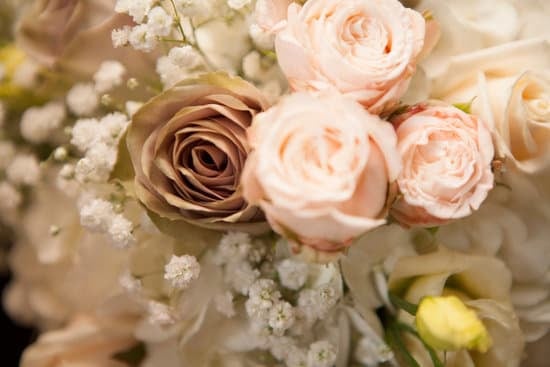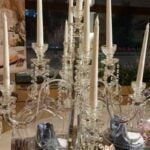Do you put dress code on wedding invitation? When it comes to planning a wedding, one of the important decisions for couples is whether or not to include a dress code on their wedding invitations.
The dress code sets the tone for the event, and it can have a significant impact on what guests choose to wear. In this article, we will explore the importance of including dress codes on wedding invitations and how it can affect the attire of those attending the special day.
Including a dress code on a wedding invitation serves an important purpose in guiding guests in their choice of attire. It provides clarity and helps guests understand the level of formality expected for the event. This information is crucial for ensuring that all attendees feel appropriately dressed and comfortable throughout the celebration.
Traditional and modern dress codes serve as guidelines for guests when selecting their outfits for a wedding. Understanding these different types of dress codes can help guests prepare accordingly and avoid any fashion faux pas.
As such, it’s essential for couples to consider how they want their guests to dress and convey that information clearly through their invitations. Stay tuned to learn more about traditional and modern dress codes, how to tastefully include them on your wedding invitations, and common mistakes to avoid when doing so.
The Purpose of Dress Codes
Including a dress code on wedding invitations serves the important purpose of providing guests with clarity and guidance on what attire is expected for the event. This can help alleviate any confusion or uncertainty regarding appropriate dress, ensuring that everyone feels comfortable and appropriately dressed for the occasion. Without a specified dress code, guests may find themselves unsure of whether to wear formal attire, semi-formal, or casual clothing, potentially leading to mismatched outfits and overall dissonance at the event.
The inclusion of a dress code also helps set the tone for the wedding, giving guests a sense of the event’s formality and style. Whether it is a formal black-tie affair or a laid-back rustic celebration, the dress code can convey important information about the overall theme and ambiance of the wedding.
By providing this guidance upfront, couples can ensure that their vision for the event is reflected in their guests’ attire, contributing to a cohesive and harmonious atmosphere.
Additionally, including a dress code on wedding invitations can be particularly helpful for out-of-town or international guests who may not be familiar with local customs or traditions. A specified dress code eliminates any cultural misunderstandings or misconceptions about appropriate attire, allowing all guests to feel included and informed. Ultimately, clarifying the purpose of including dress codes on wedding invitations underscores its role in creating an enjoyable and well-coordinated experience for both hosts and attendees.
Traditional Dress Codes
When it comes to wedding dress codes, there are several traditional options that couples can choose to include on their invitations. One of the most formal dress codes is “black tie,” which typically indicates that guests are expected to wear tuxedos and evening gowns. This is often reserved for very formal weddings held in the evening.
“Cocktail attire” is a step down from black tie, suggesting that men should wear suits and women should opt for elegant cocktail dresses. Finally, “casual dress” is a more relaxed option, allowing guests to dress comfortably but still appropriately for a wedding.
Including traditional dress codes such as black tie, cocktail attire, and casual dress on wedding invitations serves the purpose of providing guests with clear guidelines on what to wear to the event. These designations help set the tone for the wedding and give attendees an idea of what level of formality to expect. By including these dress codes, couples are able to ensure that their guests feel comfortable and appropriately dressed for the occasion.
In order to tastefully include these traditional dress codes on wedding invitations without sounding demanding, couples can make use of carefully chosen language. They should be mindful not to come across as too strict or exclusive in their wording while still clearly communicating the expected attire. Ultimately, the goal is to ensure that guests arrive at the wedding feeling confident in their choice of wardrobe without feeling pressured or uncomfortable.
| Wedding Dress Code | Description |
|---|---|
| Black Tie | Tuxedos and evening gowns |
| Cocktail Attire | Suits for men; elegant cocktail dresses for women |
| Casual Dress | Relaxed yet appropriate attire |
Modern Dress Codes
In recent years, many couples have opted for modern and innovative dress codes to reflect their unique wedding themes and venues. One popular modern dress code is “beach formal,” which suggests that guests should wear semi-formal attire suitable for a beach setting.
This could include linen suits for men and flowy dresses for women, striking a balance between elegance and practicality. Another trendy option is “rustic chic,” which encourages guests to don outfits that blend casual comfort with a touch of sophistication, perfectly complementing rustic barn or outdoor wedding settings.
Including these modern dress codes on wedding invitations can help set the tone for the event and guide guests in selecting appropriate attire. Moreover, it adds an element of creativity to the traditional concept of dress codes, allowing couples to infuse their personalities into every aspect of their special day.
When deciding whether to use a modern dress code on your wedding invitation, it’s important to consider not only your personal preferences but also the comfort and convenience of your guests. While traditional dress codes offer clear guidelines, modern alternatives allow for more flexibility and individual expression. Whether you opt for beach formal or rustic chic, providing clear descriptions and examples alongside the dress code will help ensure that everyone feels confident in their choice of attire.
| Modern Dress Code | Description |
|---|---|
| Beach Formal | Semi-formal attire suitable for a beach setting; linen suits for men and flowy dresses for women. |
| Rustic Chic | Casual yet refined attire that blends comfort with sophistication; ideal for rustic barn or outdoor wedding settings. |
How to Include Dress Codes
When it comes to including dress codes on wedding invitations, there are a few key tips to keep in mind. Not only does the dress code provide guests with a clear understanding of what is expected attire-wise, but it also sets the tone for the event. Here are some tips on how to tastefully include dress codes on wedding invitations:
1. Be Clear and Concise: When including a dress code on your wedding invitation, be sure to use clear and concise language. Avoid using vague terms and instead opt for specific descriptors such as “black tie” or “cocktail attire.” This will leave little room for interpretation and help guests understand exactly what is expected of them.
2. Use Proper Placement: The placement of the dress code on the invitation is important. Typically, the dress code is included in the lower right-hand corner of the invitation or on a separate card enclosed with the invitation suite. It should be easily noticeable without taking away from other important details.
3. Polite Language: It’s important to use polite language when including dress codes on wedding invitations. Instead of sounding demanding or strict, choose wording that conveys the desired attire in a courteous manner. For example, instead of saying “formal attire required,” you could say “we kindly request formal attire.”
Ultimately, including a dress code on your wedding invitation is not about dictating what your guests should wear but rather providing guidance to ensure everyone feels comfortable and appropriately dressed for your special day. By following these tips, you can tastefully include dress codes on your wedding invitations without sounding demanding or controlling.
Decoding Dress Codes
As a wedding guest, it can be quite challenging to decipher the dress code indicated on a wedding invitation. However, understanding and interpreting these dress codes are crucial in ensuring that you are appropriately attired for the occasion. Here is a guide to help you navigate through the various dress codes commonly used on wedding invitations.
Formal Attire
When the dress code indicates “black tie” or “white tie,” it means that the event is formal and requires guests to be dressed in their most elegant attire. For men, this typically means a tuxedo and bowtie for black tie, and a tailcoat for white tie events. Women can opt for long evening gowns or formal cocktail dresses for black tie occasions, while white tie events call for full-length ballgowns.
Semi-Formal Attire
If the dress code states “cocktail attire,” it suggests a semi-formal dress code where guests are expected to be dressed in a sophisticated yet relaxed manner. Men can don dark suits paired with a dress shirt and tie, while women have the flexibility to wear knee-length or midi dresses, stylish jumpsuits, or dressy separates.
Casual Attire
For casual weddings, a simple “casual attire” mention means that guests have more freedom to choose their outfits. Men can opt for slacks or chinos paired with a polo shirt or button-down, while women can wear sundresses, skirts, pantsuits, or maxi dresses. It’s important to remember that even if the event is casual, certain items such as shorts and flip-flops may still not be appropriate.
Understanding and interpreting these different dress codes will ensure that you are dressed fittingly for the wedding celebration you are attending. Do not hesitate to reach out to your hosts if you have any concerns about what to wear based on the indicated dress code on the invitation.
Common Mistakes
When it comes to including dress codes on wedding invitations, couples often make some common mistakes that can lead to confusion or misinterpretation among their guests. By being mindful of these potential pitfalls, couples can ensure that their guests understand the expected attire for their special day.
Using Unclear Language or Abbreviations
One of the most common mistakes couples make when including dress codes on wedding invitations is using unclear language or abbreviations that may be unfamiliar to their guests. Phrases like “black tie optional” or “casual chic” can be confusing and leave guests unsure of what to wear. Instead, it’s important to use clear and precise language to convey the desired dress code, such as “Black Tie” for formal attire or “Casual” for a more relaxed dress code.
Overly Specific Dress Codes
Another mistake couples often make is being overly specific with their dress codes, which can come across as demanding or restrictive. While it’s important to provide guidance for guests, overly specific dress codes like “Lounge Suit with a Touch of Blush” may leave guests feeling restricted in their outfit choices. Instead, couples should aim for a balance between providing direction and allowing flexibility for individual style and comfort.
Excluding Dress Codes Altogether
On the flip side, some couples make the mistake of excluding dress codes altogether from their wedding invitations. While it’s ultimately up to the couple whether they want to include a dress code, doing so can help guests feel more confident in their outfit choices. By omitting this information, couples run the risk of leaving guests unsure of what to wear and potentially feeling out of place at the wedding.
By avoiding these common mistakes and taking a thoughtful approach to including dress codes on wedding invitations, couples can help ensure that their guests feel comfortable and confident in their attire choices for the big day.
Conclusion
In conclusion, including dress codes on wedding invitations is a thoughtful and practical way to guide guests in choosing appropriate attire for the celebration. By providing clear guidelines, couples can ensure that their guests feel comfortable and confident in their outfit choices, thus contributing to the overall ambience of the event.
Dress codes also add to the theme and formality of the wedding, setting the tone for what is expected, whether it’s a casual beach affair or a more formal black-tie event.
While traditional dress codes like black tie and cocktail attire have been longstanding options for weddings, modern alternatives such as beach formal or rustic chic provide couples with more flexibility to match their unique wedding style. These contemporary dress codes reflect the changing landscape of weddings and offer guests a wider range of fashion choices to align with the couple’s vision.
– the answer is a resounding yes. It not only benefits your guests but also helps create a more polished and unforgettable wedding experience overall.
Frequently Asked Questions
Do You Need to Include Dress Code in Wedding Invite?
Including the dress code in a wedding invite is helpful for guests who may be unsure of what to wear. It sets clear expectations and helps ensure that everyone feels comfortable and appropriately dressed for the occasion.
Whether it’s formal, semi-formal, casual, or a specific theme, providing this information in the invitation can prevent any confusion or anxiety about attire.
Is It OK to Ask for Dress Code Wedding?
Yes, it is perfectly acceptable to ask for a dress code on wedding invitations. In fact, many couples include this information to guide their guests on what to wear.
It’s a considerate way to help attendees prepare and feel confident about their outfit choice for the celebration. By clearly communicating the dress code, hosts can ensure that their guests are appropriately attired for the event.
How Do You Tell Someone the Dress Code on an Invitation?
When informing someone of the dress code on an invitation, it’s important to use clear and concise language. Phrases like “black-tie,” “semi-formal,” “casual chic,” or “beach attire” can be included in the invitation alongside other details regarding date, time, and location.
Including this information prominently and clearly will help guests understand what is expected of them in terms of attire. If there are any specific requirements or recommendations (such as no jeans or a certain color scheme), these can also be indicated respectfully within the invitation’s language.

I have been involved in marriages for over 20 years helping couples and singles understand more about them.





